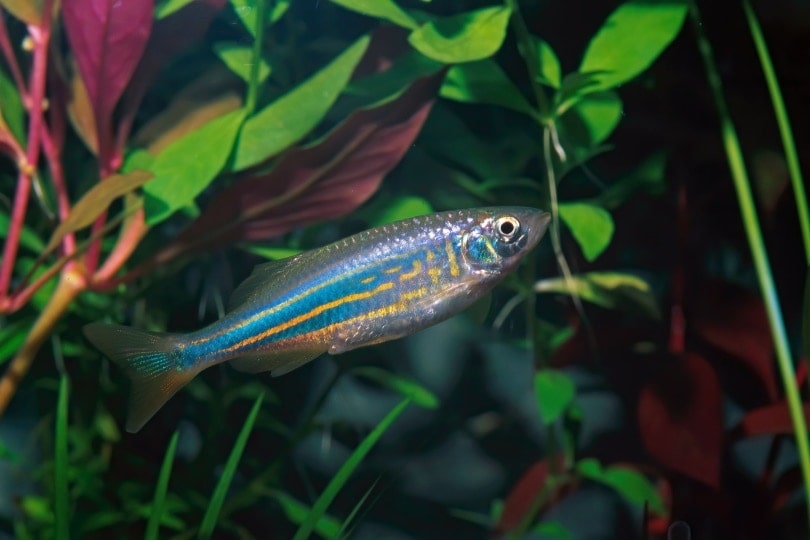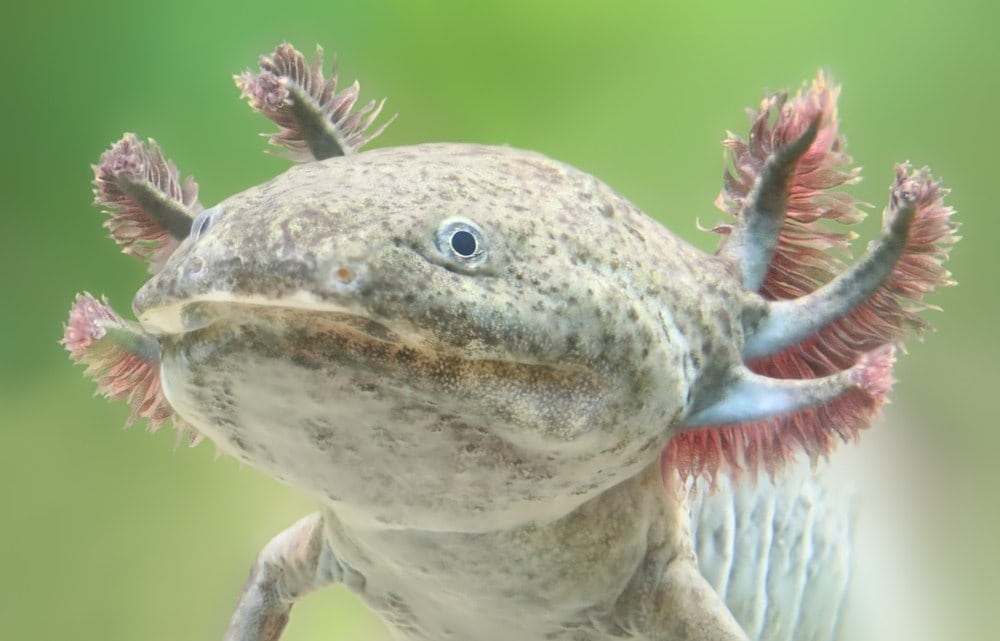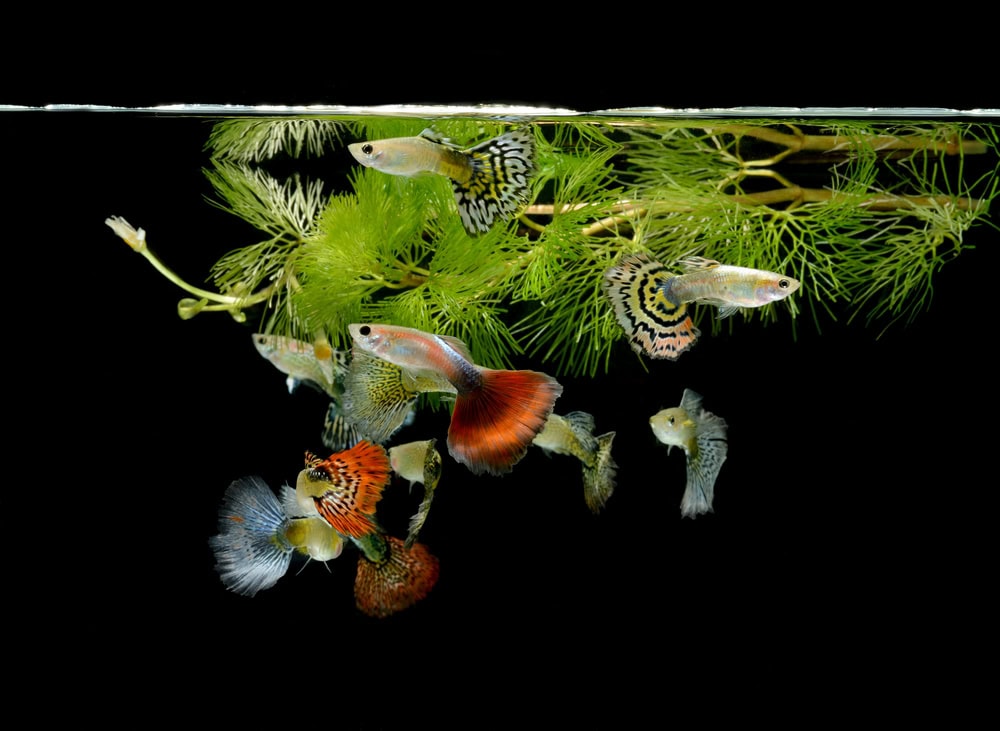Moon Jellyfish: Care Guide, Tank Mates & Breeding (With Pictures)
Updated on
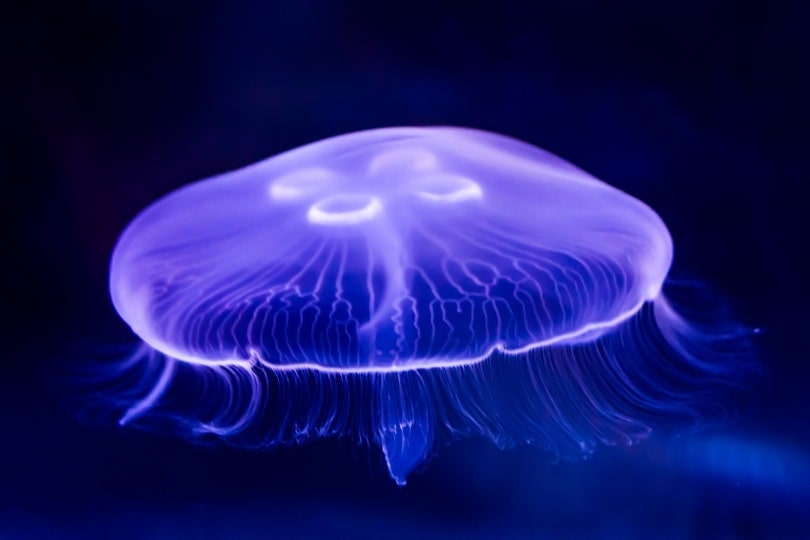
Click to Skip Ahead
Having a pet offers many benefits, from keeping you active to teaching children responsibility. Many people find keeping aquarium fish rewarding. More hobbyists may have freshwater tanks, but saltwater tanks offer similar advantages, including the chance to own exotic pets, such as moon jellyfish. It’s a relatively recent trend, with enthusiasts promoting the mental health benefits of watching marine life1.
Raising jellyfish is different than having a saltwater tank. It requires a specialized setup and advanced care. However, experienced hobbyists looking for a challenge will find what they need with moon jellyfish.
Species Overview
| Size: | 4–14 inches long |
| Lifespan: | About 1 year |
| Similar Breeds: | Violet jellyfish, upside down jellyfish |
| Suitable for: | Experienced fish owners |
| Temperament: | Peaceful |
Moon Jellyfish Characteristics
Moon Jellyfish Fish Cost
The moon jellyfish is part of the Ulmaridae family of other similar organisms. It lives in a diverse spectrum of conditions due to its global range. They typically live in open water around coastal areas. They inhabit both the epipelagic zone, where sunlight can still reach for photosynthesis, and the mesopelagic zone, where it does not.
It can be a nuisance in the wild, adversely affecting fisheries and power plants. Science has found positive uses for this animal in medicine, food, and biotechnology. Otherwise, its effects on the environment have been somewhat negative. Its segue into the pet industry is fortuitous on that front. Increasing populations have warranted control measures to contain them and reduce their impacts.
Retailers and wholesalers selling moon jellyfish have an abundant supply from which to draw. Stability is the key to keeping these invertebrates. That means a specialized setup that will add to your cost. The animals aren’t expensive and are often sold in groups by size. Our research found that individuals are less than $50. However, that figure doesn’t include expedited shipping.
Sociability of Moon Jellyfish
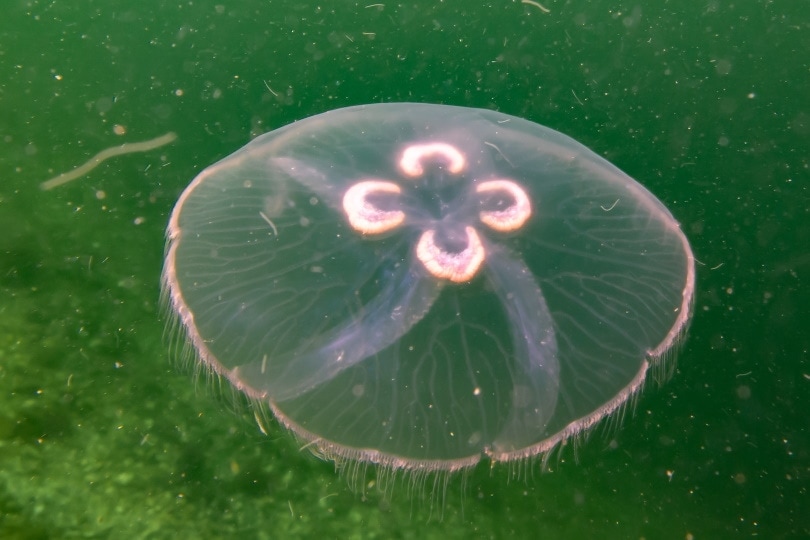
Moon jellyfish are best kept with others of their kind. Anything else is likely to end up as prey for these carnivorous creatures. However, you can keep more than one in a dedicated tank. It’s worth noting that the recommended aquascape is different from the one for other saltwater fish, which further supports this suggestion.
Do These Invertebrates Make Good Pets?
The benefit of keeping moon jellyfish lies in their beauty. An aquarium decked out to showcase them is rewarding. You’ll likely find it pleasant to watch your pets drift slowly through the water. Their movement is mesmerizing and calming.
Does This Invertebrate Make a Good Tank Mate?
The moon jellyfish is only a good tank for other moon jellyfish.
Care Guide & Tank Setup
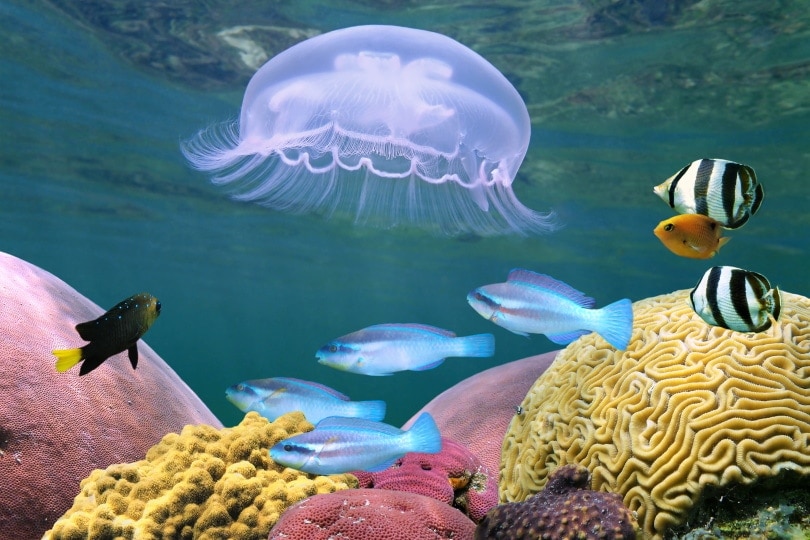
Water Quality, pH & Temperature
The moon jellyfish requires a tank that has gone through a complete nitrogen cycle despite the fact you shouldn’t keep them with other fish. It is a biological filtration system that encourages the development of beneficial bacteria that will keep the water conditions stable. That is imperative for keeping these invertebrates. We suggest weekly testing to ensure the parameters are in check.
Remember that these animals live in the open water where conditions don’t change suddenly or dramatically. Aim for temperatures between 60℉ and 78℉. You can use a heater to ensure it stays within this range. The pH should be slightly alkaline and between 8.1 and 8.4. The specific gravity should fall between 1.023 and 1.025. Salinity should be between 32 and 35 parts per thousand (ppt).
You shouldn’t use a regular fish tank for jellyfish. The corners of a rectangular or square aquarium are a potential hazard. Instead, you should get one with rounded corners.
Substrate
Moon jellyfish don’t need a substrate because of the zones in which they live. Sharp-edged pieces could injure these fragile creatures. If you want to add it for aesthetic reasons, make sure to get rounded stones or soft reef sand. However, you don’t need to put anything on the bottom of the tank. Leaving it bare will make maintenance easier.
Plants
Plants and other décor are unnecessary. These invertebrates don’t need them for food. They may also hamper their ability to feed and cause injuries if you add artificial ones. One of the selling points of keeping moon jellyfish is the freedom to swim unhindered by anything in the tank that could interfere with their movements.
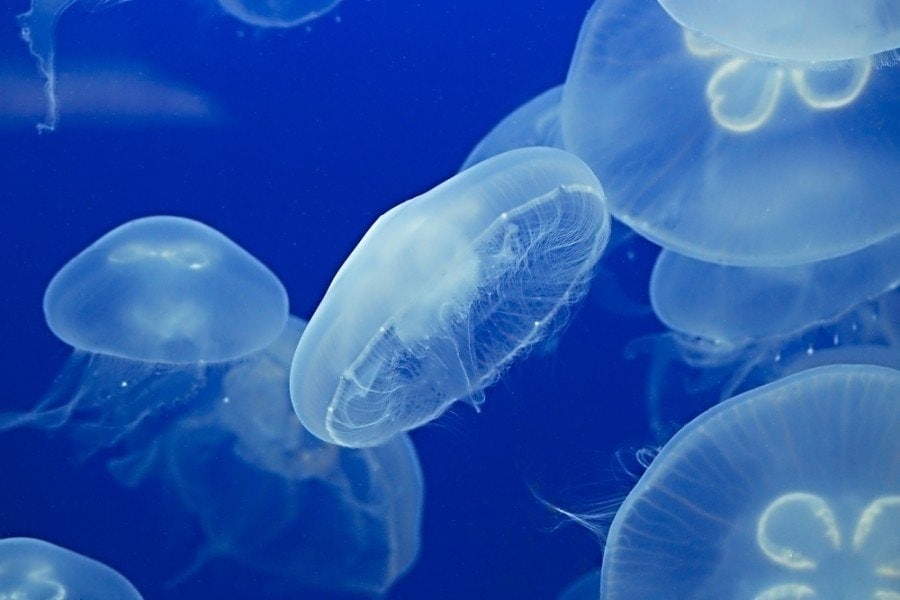
Lighting
Some moon jellyfish live at ocean depths where light isn’t a factor. Nevertheless, a regular day-and-night schedule of subdued lighting will benefit them and add to the aesthetic appeal of your aquarium. We suggest setting up a timer or using a smart device to ensure a 12-hours-on, 12-hours-off light schedule.
Filtration
We mentioned the delicate body of jellyfish. That comes into play with the filtration system you use. A sponge filter is an excellent option for these invertebrates. It will get the job done without disrupting the normal ebb and flow in the tank. You shouldn’t use systems that introduce a lot of air bubbles into the tank since it can interfere with the animal’s ability to move.
Bimonthly water changes of no more than 20% of the capacity will ensure a healthy living environment. You should prepare the replacement mixture a day before to condition it and minimize changes in the water chemistry.
Things to Know When Owning a Moon Jellyfish:
Food & Diet Requirements
The moon jellyfish is a carnivore. Therefore, it needs animal-based protein sources. Acceptable options include live brine shrimp, commercial jellyfish food, and frozen foods. You should feed your pet daily and follow a routine. Remove any uneaten food to help maintain the water quality and avoid excessive ammonia development.
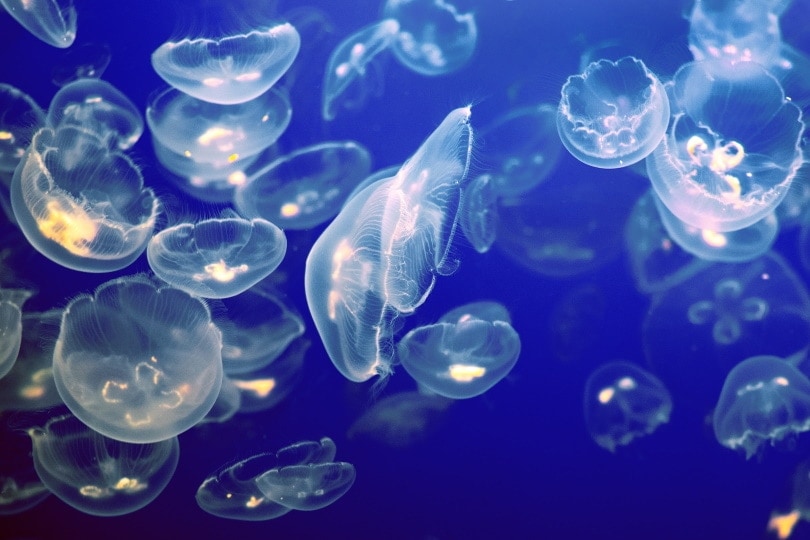
Size & Growth Rate
You’ll likely watch your moon jellyfish grow to around 1.5 inches long. They have a relatively short lifespan. Growth will seem rapid for the time you’ll have your pet. A healthy diet will ensure that it reaches its maximum size.
Varieties
Other similar jellyfish species exist, but there is only one moon jellyfish.
Lifespan and Health Conditions
Most problems that arise with the moon jellyfish involve poor water quality. That is your main task when keeping these invertebrates. The second is minimizing stress by maintaining stable conditions in your aquarium. There should be adequate flow so that the animal’s tentacles can move freely. Otherwise, they are relatively disease-resistant.
- Malformation of tentacles
- Curled bell
- Bell inversion from malnutrition or inadequate water flow
Male vs. Female
Moon jellyfish reproduce asexually and sexually. However, there aren’t any associated courtship rituals or behavior that would distinguish the sexes. The male releases sperm-containing filaments that the female gathers into her gastric pouches. You can tell them apart by the color of the gonads. The female gonads are brown, whereas the male gonads are pink. They breed year-round.
3 Little-Known Facts About Moon Jellyfish
1. Moon Jellyfish Are Bioluminescent
The moon jellyfish is bioluminescent and glows in the dark ocean waters. It’s a common trait in organisms that live in these environments.

2. Moon Jellyfish Are Global Travelers
Moon jellyfish have one of the largest ranges of any species. They live in virtually every ocean on the planet except the Arctic and African waters.
3. The Moon Jellyfish Can Sting You
This species has the same defense mechanism that others of its kind have. While it can sting you, it likely won’t hurt you, although that’s not to say you won’t feel it.
Final Thoughts
The moon jellyfish offers hobbyists another option for creating a unique saltwater aquarium. Its slow movement in the water creates a relaxing scene to view. While they don’t live long, you’ll likely get much enjoyment from raising them. It’s an excellent way to view nature from a different perspective. The invertebrates aren’t expensive. However, your setup might take a bite out of your wallet to do it right.
Featured Image Credit:





